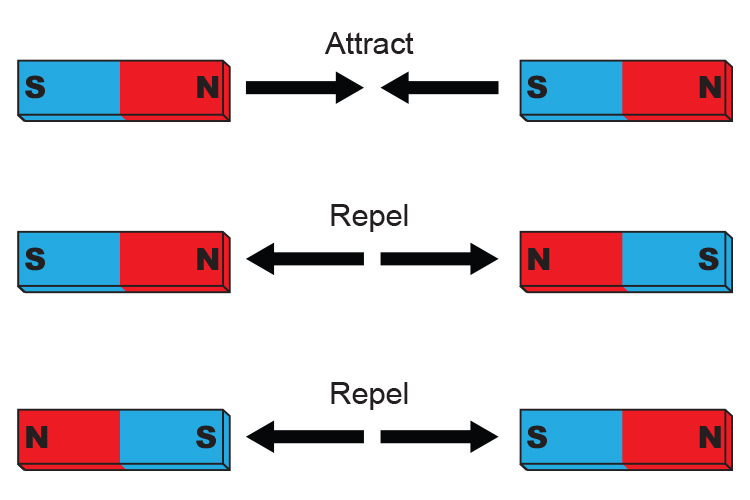Chapter 13, sub-chapter 2: magnetic poles
Chapter 13, sub-chapter 2: Magnetic Poles
Taken from the Cambridge Checkpoint Science Coursebook stage 8.✌
Welcome back to my blog★
In this blog post, I will be re-writing a sub-chapter from my Science coursebook. There will also be a video that is about magnetic poles.
Magnets attract magnetic materials. There is a magnetic force which pulls on a piece of steel when a magnet attracts it.
You may have noticed that the force is strongest if you use the end of the magnet. A bar magnet's magnetism is strongest at the ends. The ends of the magnet are called its magnetic poles.
The poles are called the north pole (N) and the south pole (S). Why is this?
If you hang up a bar magnet so that it is free to turn around, it will turn until one end points towards the north - this end is the north pole of the magnet. The south pole points towards the south.
Two magnets
The diagram shows what happens when the poles of two magnets are close together. They may attract each other, or they may repel each other (push each other away). The arrows show the direction of the force of each magnet.
Magnet rules
Here are the rules which tell us whether two magnetic poles will attract or repel:
- Like poles repel
- Unlike poles attract
In these rules, 'like poles' means both poles are the same (both north poles or both south poles). 'Unlike poles' means one north and one south pole. Sometimes people simply remember the phrase 'opposites attract'.
This video shows how magnets attract and repel each other.👇
- https://www.youtube.com/watch?v=VysUQuwu_GE
- https://mammothmemory.net/images/user/base/Physics/magnets/opposite-poles-attract-oppsoite-poles-repel-fix.75a3e61.jpg
- https://mammothmemory.net/images/user/base/Physics/magnets/opposite-poles-attract-oppsoite-poles-repel-fix.75a3e61.jpg

Comments
Post a Comment